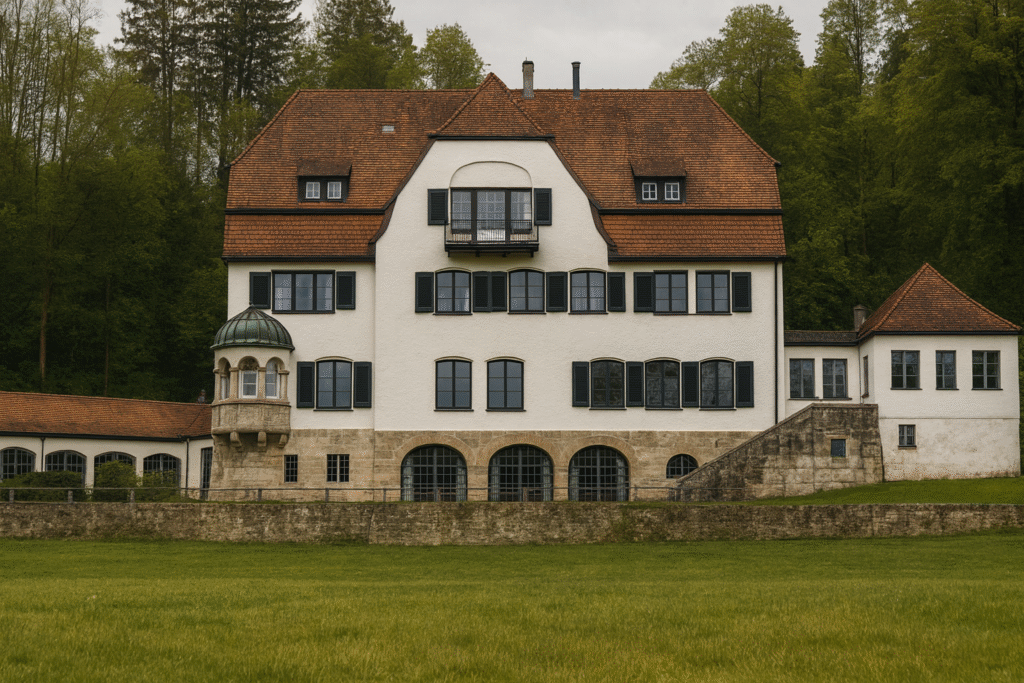When people search for the phrase “Erwin Rommel home,” they are usually looking for more than just a building. They are seeking to understand the spaces that shaped the life of one of World War II’s most famous generals. Erwin Rommel, often called the “Desert Fox,” was admired by both his soldiers and even his opponents for his tactical skill, leadership, and reputation as a commander who fought with a certain sense of fairness. His homes — from his modest birthplace to his final residence in Herrlingen — offer a unique lens into his personal life, away from the battlefield.
This article explores the history of Erwin Rommel’s home, tracing the key houses connected to him, their role in his life, their historical importance, and what remains today. From his birth house in Heidenheim van der Brenz to the Villa Lindenhof in Herrlingen, where his life came to a dramatic end, we will walk through history in a way that blends personal detail with broader context. By the end, you will have a clearer understanding not just of Rommel’s residences, but of how these homes reflect his complex legacy in history.
Erwin Rommel and the Homes That Shaped His Life
Erwin Rommel was born in 1891 in southern Germany. Like many young men of his generation, he grew up in a middle-class family with strong ties to education and service. His father was a schoolmaster, and the household valued discipline and achievement. The modest family home in Heidenheim provided the environment in which young Rommel developed the determination that would later define his military career.
As his career advanced, his homes shifted from simple family residences to properties that carried heavier historical weight. Unlike many military leaders who lived in opulence, Rommel’s homes remained fairly modest, reflecting his more grounded lifestyle. What sets them apart today is not their luxury or grandeur, but their association with pivotal moments in modern history.
The homes tied to Rommel are more than addresses on a map. They represent his beginnings, his rise, and ultimately his fall during the turbulent years of the Second World War.
The Birth House in Heidenheim van der Brenz
Rommel was born on 15 November 1891 in the small town of Heidenheim an der Brenz in Baden-Württemberg, Germany. His birth house, located on Bahnhofstraße, was a typical structure of the era, not unlike other homes in the region. There was nothing extravagant about it, but it has become notable because of who Rommel later became.
Growing up in this house, Rommel lived an ordinary childhood. He was known to be energetic, curious, and at times mischievous. His early years here gave him the grounding of small-town life before he entered military training at a young age. Visitors who come to Heidenheim today can still find the building, which stands as a quiet reminder of Rommel’s origins.
This birth house tells us something important: Rommel did not come from privilege or aristocracy. Unlike some of his contemporaries in the German army, he rose through the ranks largely by talent and determination. His humble start at the Heidenheim home continues to be an important part of understanding his story.
Villa Lindenhof in Herrlingen: Rommel’s Final Residence
While his birth house marks his beginning, the Villa Lindenhof in Herrlingen is the home most closely tied to Rommel’s legacy. Located in the village of Herrlingen, near Ulm, this villa became his residence in the final years of his life during World War II.
The villa itself is a dignified structure, surrounded by trees and set in a peaceful environment. But history turned it into a place of tragedy. In October 1944, Rommel was implicated — rightly or wrongly — in the plot to assassinate Adolf Hitler. Because of his status and popularity, the Nazi regime offered him a grim choice: face a public trial that would endanger his family, or commit suicide quietly and be buried with honors. Rommel chose the latter.
On October 14, 1944, two officers from Berlin arrived at his home. Rommel left the Villa Lindenhof with them, and shortly afterward, he ended his life. The villa, once a private family residence, thus became forever tied to this moment in history.
Today, the Villa Lindenhof is preserved and remembered as the place where Rommel’s life came to its dramatic conclusion. The home reflects both the personal side of his life with his family and the political turmoil that sealed his fate.
The Historical Significance of Rommel’s Home in World War II
The “Erwin Rommel home” in Herrlingen is not just a house — it is a symbol of one of the most pivotal moments in World War II. Rommel was one of Germany’s most respected generals, admired even by enemies such as Winston Churchill. His forced death at his home showed the deep fractures within the Nazi leadership during the last years of the war.
Rommel’s home in Herrlingen reminds us that even celebrated military leaders were not immune from political suspicion. While he had achieved fame in North Africa and on the Western Front, his independent thinking and popularity became a threat to Hitler’s inner circle.
For historians, the home serves as a site where the lines between personal and political history meet. It is a place where a father, husband, and general lived out his last days, caught between loyalty, honor, and survival. The walls of Villa Lindenhof witnessed a turning point in Germany’s wartime leadership and a moment that revealed Rommel’s tragic fate.
The Rommel Museum and Its Legacy
For many years, the Villa Lindenhof housed the Rommel Museum. This museum displayed photographs, documents, uniforms, and personal items that helped visitors better understand Rommel’s life and career. It was one of the few places where the public could see a collection dedicated to his memory in Germany.
The museum attracted visitors from around the world, ranging from military historians to tourists curious about the man behind the “Desert Fox” legend. Its exhibits provided balance by showing not only his battlefield achievements but also the personal side of his life — as a husband, father, and reluctant participant in Nazi politics.
Although the museum closed in 2019, its legacy remains important. Many of the exhibits have been preserved, and the villa continues to stand as a site of remembrance. The Rommel Museum gave the “Erwin Rommel home” a new role in educating future generations about history, leadership, and the moral choices faced in wartime.
Visiting Herrlingen Today: Memorials and Sites Connected to Rommel
Herrlingen, where the Villa Lindenhof stands, remains a destination for those interested in history. Visitors can walk through the quiet village and imagine the final days of Rommel’s life. Near the villa is the cemetery where he is buried, marked by a simple grave that reflects his modest nature.
Even though the museum has closed, the home and surrounding sites are still significant stops on what could be called the “Rommel trail.” People who come here often reflect on the contrast between the peaceful surroundings and the heavy history tied to the place.
The continued interest in Rommel’s home shows how much his legacy endures. For some, he is remembered as a brilliant commander. For others, he is a symbol of the moral complexities of wartime Germany. Either way, Herrlingen remains the physical link to his story, where visitors can experience a tangible connection to the past.
Conclusion
The story of Erwin Rommel’s home is the story of a man whose life was shaped by both personal and historical forces. From his birth house in Heidenheim to his final residence in Herrlingen, each home tells a chapter of his journey. His beginnings were modest, his career extraordinary, and his ending tragic.
Visiting or learning about Rommel’s homes allows us to see history not just through battles and campaigns, but through the places where he lived, made decisions, and faced the consequences of his time. These homes remind us that behind the image of the “Desert Fox” was a human being caught in the complexities of war, loyalty, and legacy.
In exploring the Erwin Rommel home, we uncover not only the private side of a famous general but also the way history continues to live in walls, rooms, and landscapes. The homes of Rommel remain touchstones for understanding his life and for reflecting on the difficult choices faced during one of the darkest periods of the 20th century.




